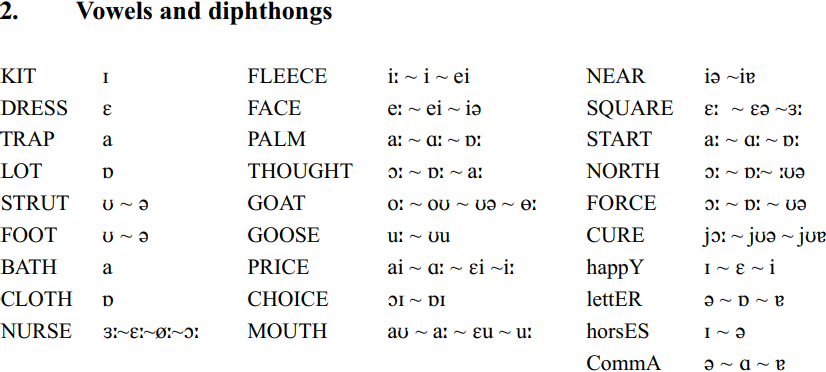
Differences between dialects in the North of England
 المؤلف:
Joan Beal
المؤلف:
Joan Beal
 المصدر:
A Handbook Of Varieties Of English Phonology
المصدر:
A Handbook Of Varieties Of English Phonology
 الجزء والصفحة:
120-6
الجزء والصفحة:
120-6
 2024-02-24
2024-02-24
 1429
1429
Differences between dialects in the North of England
According to Wells (1982), “local differences in dialect and accent as one moves from valley to valley or from village to village are sharper in the north than in any other part of England, and become sharper the further north one goes” (Wells 1982: 351). In the light of recent studies which provide evidence of levelling in the North of England (discussed in 1.2 above), this may seem too bold a statement. Nevertheless, it is certainly the case that, even with regard to modern dialects, more features differentiate northern dialects from each other than are common to all of them. Even in areas where levelling occurs, new shibboleths are emerging to represent perceived differences between speakers living as little as 10 miles apart (cf. Beal [2000a] for an account of differences between ‘Geordie’ [Newcastle] and ‘Mackem’ [Sunderland]).
Whilst all northern dialects share certain phonological features, notably the short /a/ in BATH and ‘unsplit’ /u/ in FOOT/ STRUT, others differentiate dialects within the North. Some of these distinctions are not strictly geographical, except insofar as they distinguish the more traditional speakers in rural areas from their urban neighbors. Even in the most remote corners of England today, young people attend high school and carry out leisure pursuits in larger towns and cities, so speakers of traditional dialects are likely to be older as well as rural. An example of a distinctive feature of traditional dialect can be found in the North-east, where increasingly only traditional dialect speakers have the Northumbrian burr  . However, other North-eastern features, such as /h/- retention, would be common to all speakers in this area, at least north of the Wear.
. However, other North-eastern features, such as /h/- retention, would be common to all speakers in this area, at least north of the Wear.
Other features distinguish dialect areas within the North from each other. In Trudgill’s account (1999: 65–75), the area which I have defined as the North in 1.1. above includes six dialect areas: Northeast, lower North, central Lancashire, Merseyside, Humberside and Northwest Midlands (the last of these includes Manchester). These divisions are arrived at on the basis of five phonological criteria: /h/-dropping/retention, monophthong versus diphthong in FACE, velar nasal plus in SING, rhoticity versus non-rhoticity, and the final vowel of happY. As we shall see, whilst these features do serve to distinguish the major dialect divisions in the North of England, they are not the only features which are salient.

 الاكثر قراءة في Phonology
الاكثر قراءة في Phonology
 اخر الاخبار
اخر الاخبار
اخبار العتبة العباسية المقدسة


